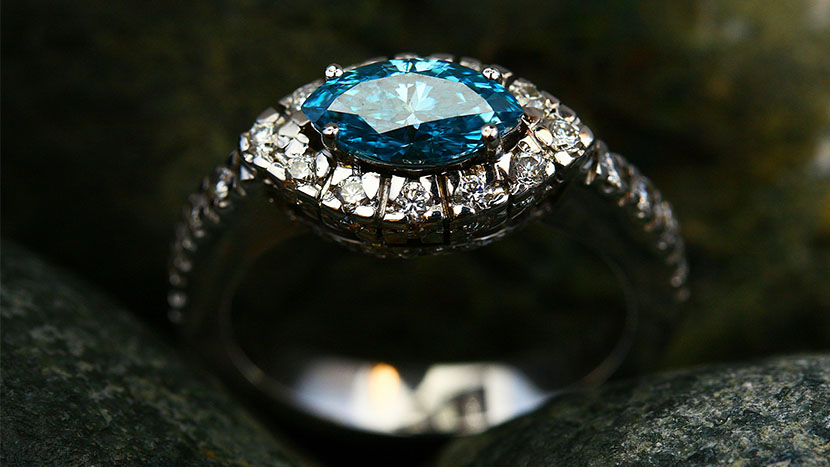Exploring the Science of Color-Changing Gems
Color-changing gems are undoubtedly captivating with their remarkable ability to shift hues under varying lighting conditions. But it’s not just about the aesthetics. The science behind these gemological wonders is just as captivating.
Types of Color-Changing Gems
Unlike their monochromatic cousins, color-changing gemstones (of which, there aren’t many types) offer a dynamic visual experience that changes from daylight to artificial light or from one angle to another.
Here’s a brief rundown.
Alexandrite
This gemstone is renowned for its dramatic color shift from lush green in daylight to a rich red under incandescent light. (The intensity of the color change often reflects the quality of the gem.) With such aesthetic delight to be had, it is no wonder that many are turning to Diamondere’s alexandrite ring collection and other pieces of jewelry that feature these unique gems.
Color Change Garnet
Color change garnets can display a range of colors, typically shifting from bronze-toned greens or olive in natural light to rose pinks and reds indoors.
Color Change Sapphire
This type of sapphire can transition from a cool blue hue in natural light to a purplish red under indoor tungsten light, making it a versatile choice for jewelry.
Andesine
Known for subtle changes, Andesine shifts from shades of green or yellow-green to orange or reddish tones depending on the lighting conditions.
Diaspore
Also known by its trade name Zultanite, diaspore offers one of the most striking shifts—from kiwi greens with yellows in bright sunlight to champagne pinks and ginger hues under softer incandescent lighting.
The Role of Crystal Structure and Light in Color Transformation
So, what’s the science behind these marvelous color-changing gemstones
At its core, the color-changing phenomenon, known as pleochroism, occurs due to the way different wavelengths of light are absorbed and reflected by the gem’s internal structure.
Each gem variety boasts a unique crystal lattice that interacts distinctively with light. These interactions are further influenced by trace elements like chromium, iron, and titanium, which embed themselves within the crystals during formation.
The Impact of Trace Elements on Hue Shifts
Trace elements are the unsung heroes in the narrative of color-changing gems. These microscopic constituents, though present only in minute quantities, play a pivotal role in defining the gem’s color palette.
For instance, vanadium and chromium are crucial for the dramatic green-to-red transition observed in alexandrite and in sapphires; the presence of iron and titanium dictates the shift from blue to violet or purple under different lighting conditions.
Understanding how these elements interact with a gem’s crystal structure allows us to not only marvel at nature’s artistry but also replicate these effects in laboratory conditions to create synthetic versions, expanding the possibilities for both jewelers and collectors alike.
Harnessing Technology to Mimic Nature’s Art
Advancements in technology now allow scientists and gemologists to not only study but also replicate the captivating color-changing properties of these unique gems. Through careful manipulation of crystal growth environments and precise insertion of trace elements, synthetic versions can be crafted to mirror natural stones’ visual effects.
This technological prowess not only makes these gems more accessible but also opens new avenues for use in various industries, from jewelry making to sensor technologies that require materials sensitive to light changes.
Such innovations embody a perfect blend of nature’s designs with human ingenuity, pushing the boundaries of what’s possible in both aesthetics and functional applications.
Final Thoughts
The enigmatic allure of color-changing gems transcends mere beauty, inviting us into a deeper understanding of nature’s complexities. Each gem tells a story – not just of light and color but of the intricate dance between crystal structures and trace elements.
Embracing both their aesthetic appeal and scientific significance enriches our appreciation for one of Earth’s most fascinating phenomena. Now you know how gemstones change color, you might be interested in learning why leaves change color.


































































































